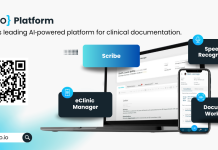The user experience is key to sufficient and operational digital public services, with the potential to reimagine communications and marketing opportunities
The hastened development of “digital government” and remote/hybrid work during 2020 has created a tremendous opportunity for government organizations. Many national and local agencies now have more connected platforms to effectively listen, communicate, and co-create with the people and groups being served and can therefore launch into a new era of more responsive, innovative public services.
The desire for innovative and digital public services
We know from recent research that people want government services to be simple, intuitive, and trustworthy. In the UK alone, nearly two-thirds of respondents said accessing public services is frustrating, and the top two things that would make them more likely to use government digital services were “ease of use” (46%) and “more confidence in data security and privacy” (43%). At the same time, more than one-third (36%) said they prefer in-person services, and 54% said they prefer to access services vis telephone services rather than online access, and one in five lacks high-speed Internet access at home.
Nevertheless, whether services are accessed online, in-person or via telephone or mail, digital tools encompassing data analytics, sentiment monitoring and collaborative capabilities are now widely available to help improve and, in some cases, reimagine public service offerings and delivery.
Digital public services running alongside a digital government
With the ongoing expansion of digital capabilities in government, there is strong potential to truly reimagine and invigorate communications and marketing opportunities.
Government leaders widely see communications strategy as extremely important in achieving their departmental or program objectives, and now data and analytics capabilities enabled by the cloud offer massive potential gains in aligning marketing and communications with organizational goals.
How should government departments be working to improve their marketing and communications?
As in business, marketing and communications in government are intended to reach a targeted audience with messages to raise awareness or to take a desired action. But while those in charge likely believe their organization has an effective communication strategy, measuring the effectiveness of communications is a relative shortcoming. In another study, we found nearly 40% of local government leaders surveyed earlier this year cited difficulties in understanding the impact of their marketing and communications efforts.
At the most basic level, all government departments should have a listening and learning strategy and be in the business of sentiment monitoring to understand how messages are being received. This can be achieved using several technology solutions which analyze discussions and conversations to evaluate the tone, intent, and emotion behind each message, meaning that organizations can understand the context behind the conversations.
The result is better citizen engagement across social media, live chat, and email. They should be using such data as available to better understand their audiences, to drive improvements in messaging and content, visual design, and communication methods.
Data-driven approaches to improve digital public services
We are in a new era with data-driven approaches that can improve understanding of target audiences, shape government messages and materials, improve the means of delivery and ultimately, more effectively motivate and serve the public. Government has some catching up to do. A new report, found that 95% of business executives believe their customers are changing faster than they can change their business. The pace of this change and perceived unpredictability – economic, environmental, social, and political – is driving organizations to move from customer-centricity to life-centric strategies that take a broader view of understanding and engaging customers based on a better understanding of their concerns and ever-changing needs and priorities.
The imperative of moving from customer-centricity to life-centricity applies even more prominently to government. After all, the government is the largest service provider with the broadest demographic audience and greatest need.
The good news is that there are abundant opportunities for government to better capture and act upon data to address people’s needs more effectively and to find new opportunities to add value. We know people crave government services that they trust and are easier to use. Along with this, there is tremendous and ever-growing potential for government leaders to tap and develop data, analytics and content strategies to better understand, communicate and collaborate with those being served.
Written by Jaime Bloom and Kevin Ellenwood, Managing Directors, Accenture Song.











